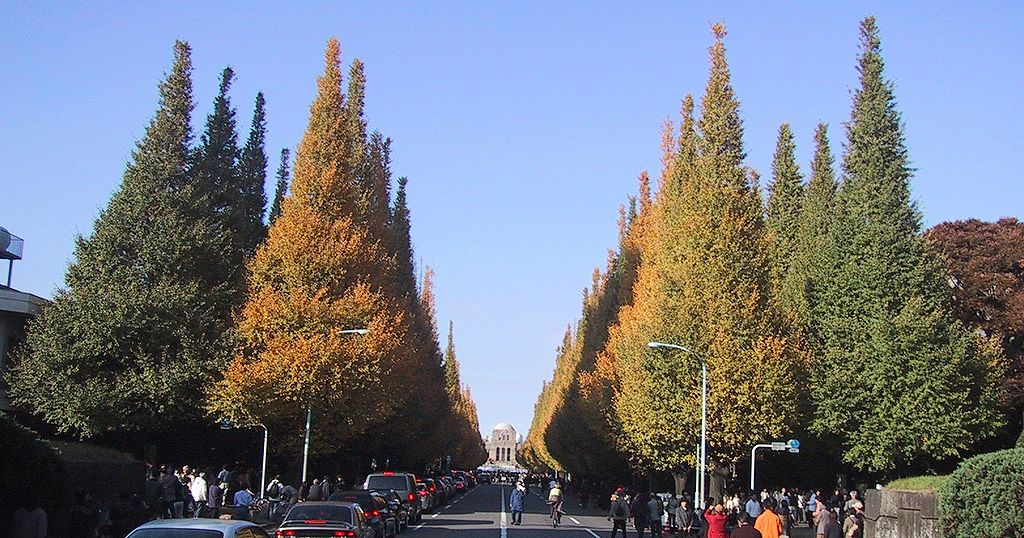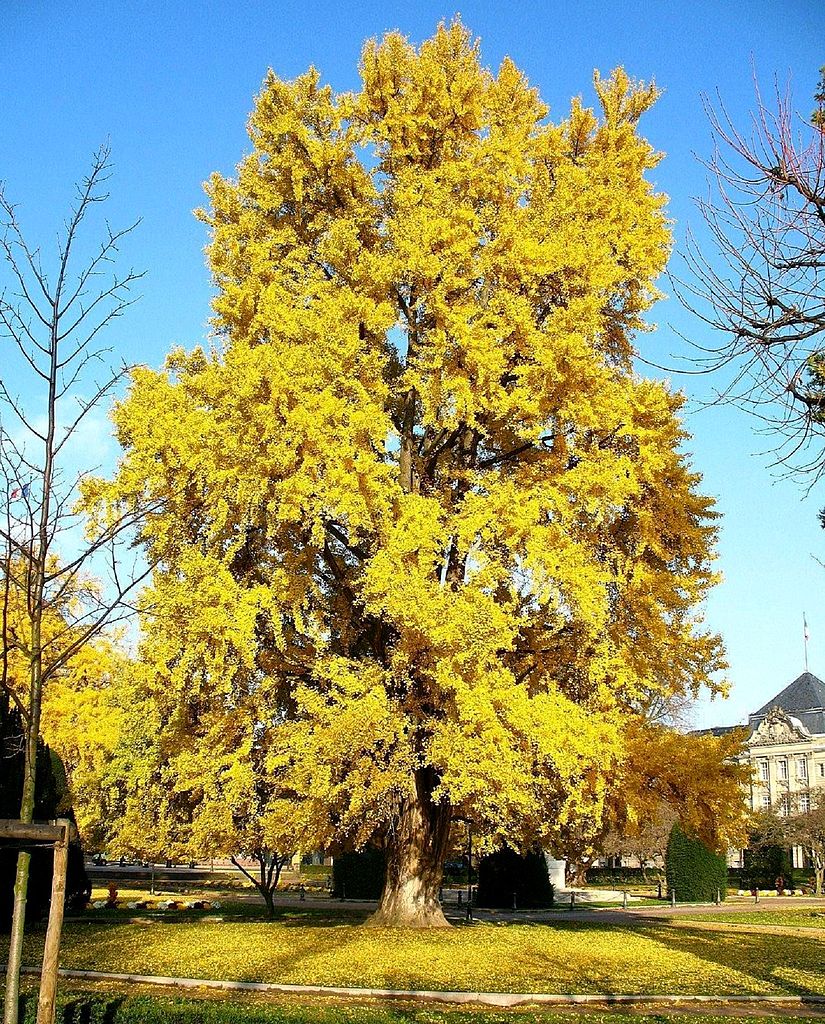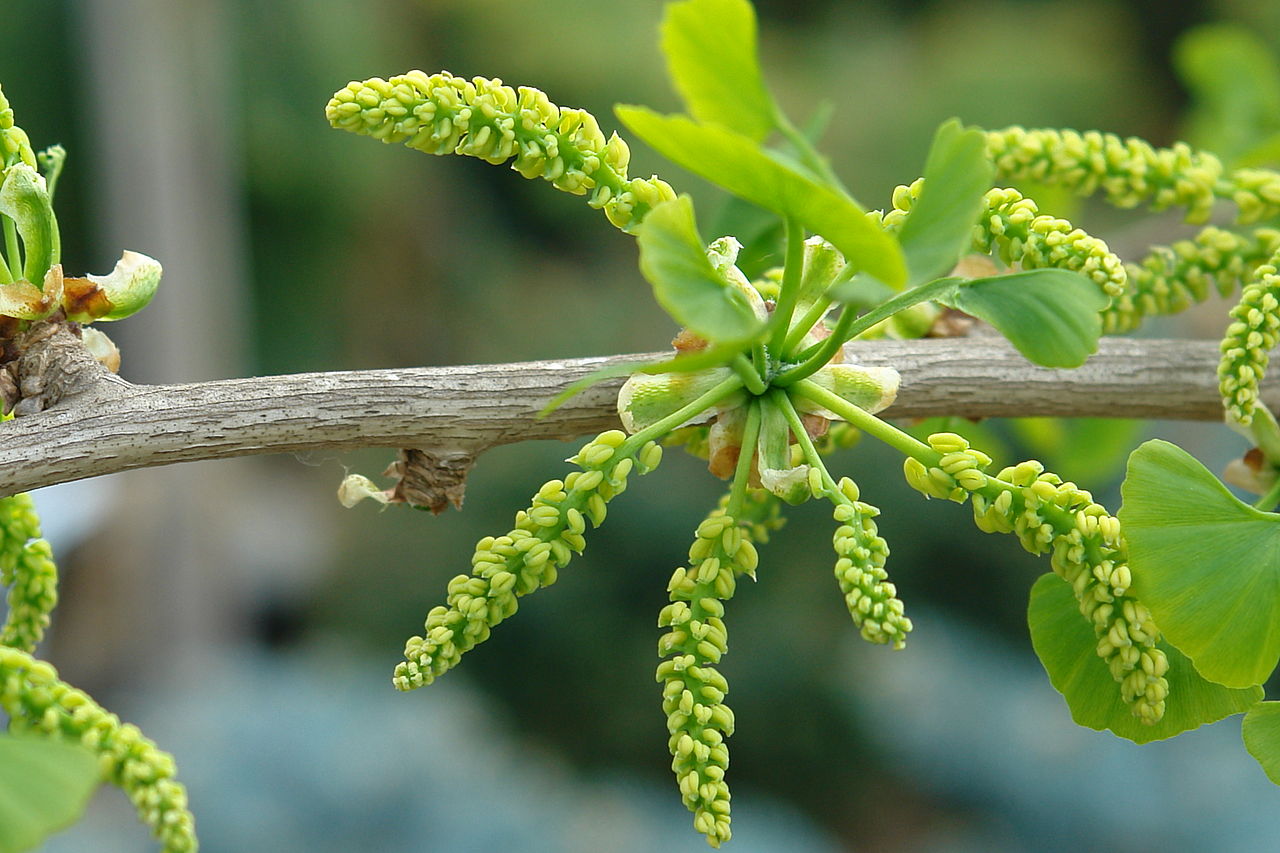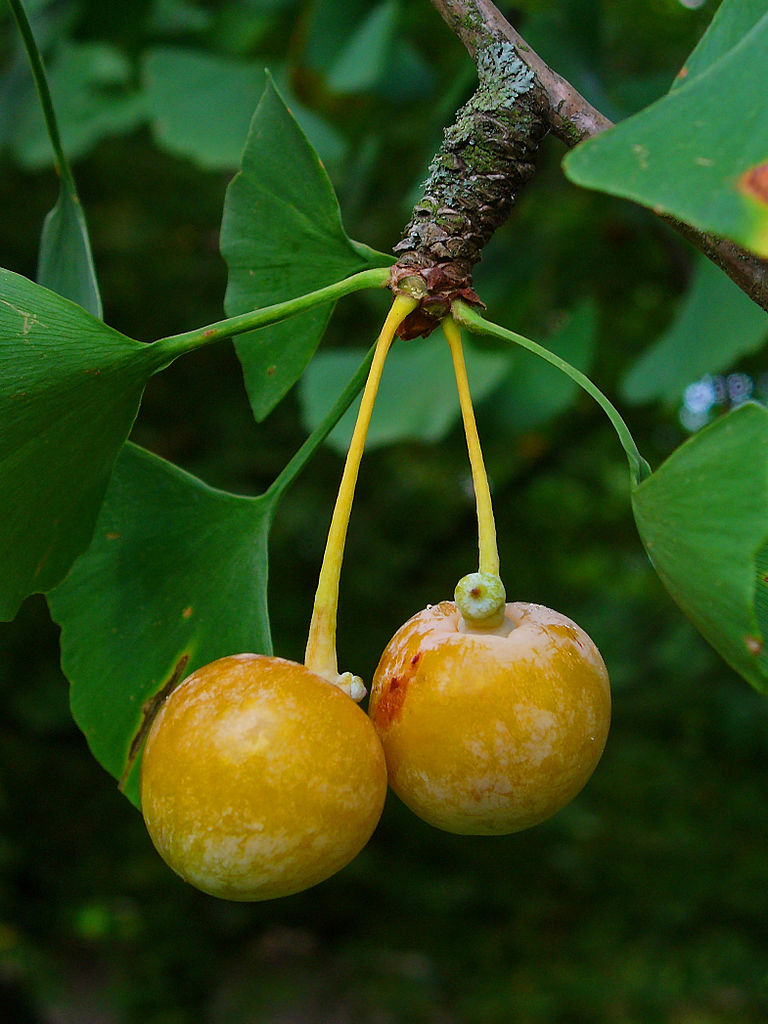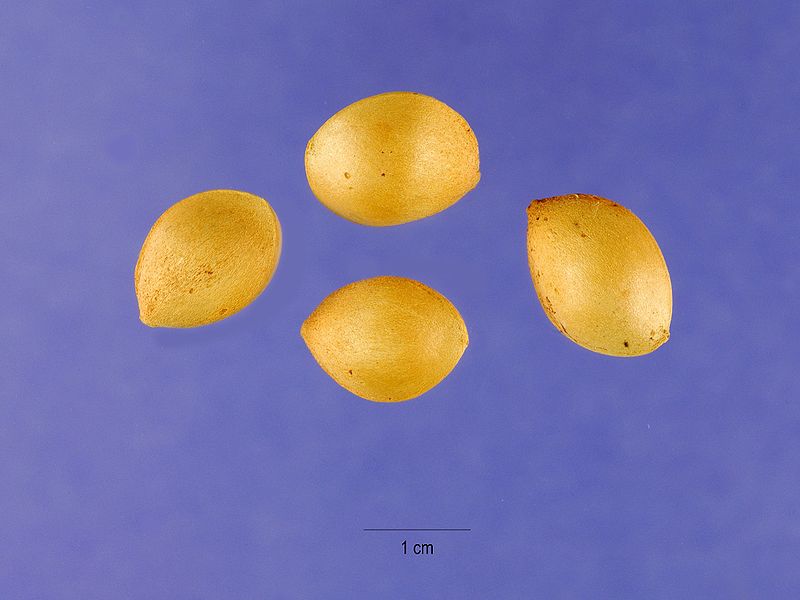Ginkgo trees (Class Ginkgoopsida) are living fossils. There is only one species of ginkgo present on Earth (Ginkgo biloba), and it appears nearly identical to fossils 270 million years old. Ginkgo biloba is the only example of a broad-leafed, deciduous gymnosperm tree. All other gymnosperm trees are needle-like, evergreen conifers. Interestingly, we believe that ginkgos became extinct in the wild, but monks in eastern China protected the lineage of this living fossil by cultivating them in their monasteries. There are a few populations of ginkgos that exist in the wild presently. However, the genetic variation of these populations is very limited, indicating they may be populations that have taken a hold from just a few trees. It is hypothesized that monks may have planted the parental trees, naturalizing these semi-wild populations.
Ginkgos are dioecious, having separate sexes, with trees either being female or male. Male plants produce pollen (sperm) in sporophylls (fleshy cone-shaped structures). Unlike most gymnosperms, female plants do not produce cones. Rather, two ovules are formed at the end of a stalk, which can develop into seeds following pollination. The seeds are surrounded by a fleshy outer layer (known as the sarcotesta) is light yellow-brown, soft, and fruit-like. The sarcotesta contains butyric acid, which smells like vomit when ripe. However, when pickled it is considered a delicacy by many people in China. The sarcotesta is not considered a fruit (which only occur in angiosperms) because it does not require pollination in order to develop.
